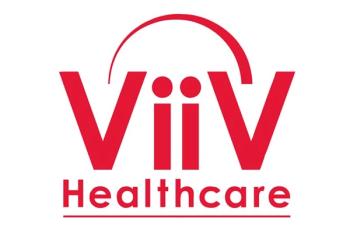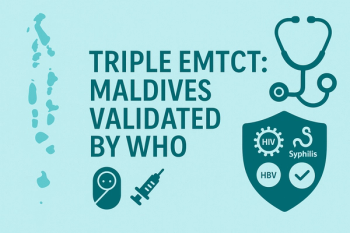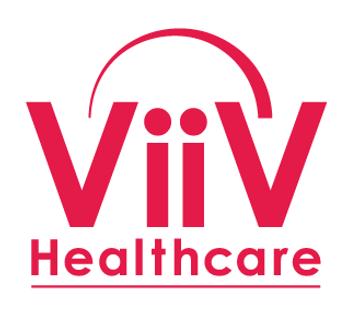
- October 2019
- Volume 4
- Issue 5
Rapid ART Initiation: A New Model Presents Unique Opportunities and Challenges
Patients with a new diagnosis of HIV may benefit from rapid start of ART.
Tremendous research and work over the past decades have transformed HIV infection from a once inevitably fatal condition to one that is both chronic and manage­able in areas with access to antiretroviral therapy (ART).1 Despite these undeniable successes, the problem is far from being resolved even in regions with full access to ART. Recent US estimates indicate that 85% of people with HIV have been given a diagnosis, 62% have received medical care, 48% have been retained in care, and 49% of those in care have achieved virologic suppression.2 Although these estimates represent an increase compared with previous years’ figures, they never­theless demonstrate that the medical community is far from achieving the 90-90-90 treatment target set by the Joint United Nations Programme on HIV/AIDS. The target indicates that by 2020, 90% of all people living with HIV should be aware of their status, 90% of those with a diagnosis should be receiving ART, and 90% of those receiving ART should achieve viral suppres­sion.3 The US Department of Health & Human Services (HHS) has defined the key components of ending the HIV epidemic, and one of the strategies is to treat HIV infection rapidly and effectively to achieve sustained viral suppression.4
The question that baffled investigators for years had been when to start ART, and findings from the START and TEMPRANO studies provided answers.5,6 The remaining question is how quickly to start ART once a diagnosis has been confirmed. Historically, a clinician would order a series of baseline lab tests, including an HIV genotype, which could take a few days to several weeks to return, in addition to participating in multiple counseling sessions prior to commencing ART. This model could disrupt the HIV care cascade, with the potential for patients not to be retained in care. Very high attrition rates have been noted for the period between testing and ART initiation, with estimates that one-quarter to one-third of individuals are lost to follow-up during this time. This has prompted investigators to attempt to address whether rapid initiation of ART is feasible and can help decrease the number of patients who are lost to follow-up.
CLINICAL TRIALS
Results of 3 randomized controlled trials (RCTs)7-9 conducted in resource-limited settings (Haiti, South Africa) demonstrated that earlier initiation of ART was associated with higher rates of early virologic suppression. In addition, Ward 86 in San Francisco, California, to which HIV testing sites refer patients, offered same-day or next-day intakes and received multidis­ciplinary evaluation, support, and insurance enrollment as it provided additional support for rapid initiation of ART.10
An unblinded, randomized trial of standard ART initia­tion versus same-day HIV testing and ART initiation was conducted among outpatients at the Haitian Group for the Study of Kaposi’s Sarcoma and Opportunistic Infections clinic in Port-au-Prince, Haiti. The primary end point was retention in care, defined as 1 clinic visit between 12 and 15 months after HIV testing, with HIV-1 RNA <50 copies/ mL at 12 months after testing. Participants were randomly assigned 1:1 to standard ART initi­ation, defined as 3 weeks after HIV testing, or same-day initiation, defined as ART on the day of testing. A total of 762 participants were enrolled between August 2013 and October 2015, of whom 59 were transferred to other clinics for care and were excluded from the protocol, leaving 356 participants in the stan­dard group and 347 in the same-day group. At the end of 12 months, significantly more patients remained in care and had achieved HIV-1 RNA <50 copies/mL in the same-day ART group compared with the standard ART group (53% vs 43.8%, P = .008). In addition, mortality was higher in the standard ART group (5.6% vs 2.9%, P = .033).7
RapIT was an unblinded RCT of single-visit ART initiation in 2 public health sector clinics in South Africa. Nonpregnant adults (>18 years) who received a positive HIV test or a first treatment—eligible CD4 count were randomized to standard or rapid initiation. Patients in the rapid initiation arm received a point-of-care (POC) CD4 count, and those who were ART eligible received POC tubercu­losis testing if symptomatic, POC blood tests, a physical examination, education, counseling, and ART dispensing. Patients in the standard arm followed standard clinic procedures, which included 3 to 5 clinic visits over 2 to 4 weeks prior to ART dispensing. The primary outcome was viral suppression, defined as initiated, retained in care, and virally suppressed (<400 copies/mL within 10 months of study enroll­ment). A total of 377 patients were enrolled between May 8, 2013, and August 29, 2014. In the rapid arm, 119 of 187 (64%) patients initi­ated treatment and were virally suppressed at 10 months compared with 96 of 190 (51%) in the standard arm (relative risk, 1.26 [1.05-1.50]).8
CASCADE was a RCT in Lesotho, South Africa, that investigated the utility of home-based HIV testing and same-day ART initia­tion and its impact on linkage to care and viral suppression. Patients were randomly assigned to same-day, home-based ART initiation (n = 138) and subsequent follow-up intervals of 1.5, 3.0, 6.0, 9.0, and 12.0 months after treat­ment initiation at a health care facility or to usual standard of care (n = 140) with referral to the nearest health care facility for coun­seling followed by ART initiation and monthly follow-up visits after enrollment. The primary outcome was the rate of linkage to care within 3 months and viral suppression (defined as HIV-1 viral load <100 copies/mL) at 12 months from 11 through 14 months after enrollment. Within the first 90 days, significantly more patients were linked to care in the same-day group compared with the standard-of-care group (68.6% vs 43.1%, P <.001). In addition, more patients achieved viral suppression by 12 months in the same-day group (50.4% vs 34.3%, P <.007).9
San Francisco General Hospital launched the Rapid ART Program for Individuals with an HIV Diagnosis (RAPID) program in July 2013, designed to facilitate ART initiation for patients with a new HIV diagnosis by immediately addressing structural barriers to same-day treatment. Under this program, clini­cians will initiate ART as soon as possible after HIV status is disclosed and ideally on the same day patients are referred for care. Of 86 patients with a new HIV diagnosis referred for initiation, 39 were managed according to the RAPID intervention and 47 received standard of care. In addition, 35 of 39 (89.7%) of patients who were offered ART received it at their first visit in the clinic, and 37 of 39 (94.9%) started within 24 hours. Within 30 days after the initial clinic visit, 100% of patients in the RAPID group had initiated ART compared with 68% of patients receiving standard of care. The median time to viral suppression (HIV viral load, <200 copies/ mL) in patients in RAPID was 56 days from clinic referral compared with 79 days among those receiving standard of care (P = .009).10
Rapid initiation of ART is important for several reasons. First, it optimizes the health of individuals with HIV. Secondly, strong scien­tific evidence from 2008 to 2016 demonstrates that individuals who receive ART and have achieved and maintained an undetectable viral load cannot sexually transmit the virus to others. These data have shown no linked HIV transmissions after >100,000 condomless sex acts in both female—male and male–male serodifferent couples in which the partner with HIV had an undetectable viral load.11 The Centers for Disease Control and Prevention and other organizations have endorsed the undetectable = untransmittable concept and noted that it is linked with ART initiation as soon as possible after diagnosis. Finally, rapid initiation may improve equity and accessibility of ART for people who may otherwise be lost to follow-up prior to commencing ART. TABLE 112,13 highlights the recommendations for rapid ART by the guideline committees that clini­cians use to assist in managing ART. The HHS guidelines call same-day initiation of ART inves­tigational but state that it may be feasible and could potentially improve outcomes.12 The International Antiviral Society—USA (IAS-USA) guidelines recommend starting ART as soon as possible, including immediately after diagnosis. The only reason not to would be if the patient is not ready. In addition, the IAS-USA guide­lines suggest avoiding nonnucleoside reverse transcriptase inhibitors because of concerns about transmitted drug resistance. Dolutegravir/ tenofovir alafenamide (TAF) (or tenofovir diso­proxil fumarate [TDF])/emtricitabine (or lami­vudine) or bictegravir/TAF/emtricitabine or boosted darunavir TAF (or TDF)/emtricitabine is recommended for rapid initiation.13 Several barriers can prevent the implementation of a rapid-start program, including reluctance of clinicians to prescribe ART with minimal or no laboratory data available as well as unavailability of same-day clinic appointments for patients. Patients presenting with certain opportunistic infections may require a delay in starting ART, as outlined in TABLE 2, and they may be inappropriate for rapid ART.14
CONCLUSIONS
Starting ART on the day of an HIV diagnosis or at the first appointment is safe and well toler­ated even before labs are obtained, and clin­ical trials have demonstrated its effectiveness. In addition, immediate ART leads to earlier viral suppression and may increase retention in care. Further research is needed on the best implementation strategies to support rapid ART initiation.
Short is an associate professor of medicine at the Perelman School of Medicine at the University of Pennsylvania in Philadelphia.
References:
1. The Antiretroviral Therapy Cohort Collaboration. Life expectancy of individuals on combination antiretroviral therapy in high-income countries: a collaborative analysis of 14 cohort studies. Lancet. 2008 Jul 26;372(9635):293-9. doi: 10.1016/S0140-6736(08)61113-7.
2. Centers for Disease Control and Prevention. Understanding the HIV Care Continuum. CDC website.
3. Joint United Nations Programme on HIV/AIDS (UNAIDS). 90.90.90 An ambitious treatment target to help end the epidemic. UNAIDS.org.
4. Fauci AAS, Redfield RR, Sigounas G, WEahkee MD, Giroir BP. Ending the HIV epidemic, a plan for the United States. JAMA. 2019 Mar 5;321(9):844-845. doi: 10.1001/jama.2019.1343.
5. INSIGHT START Study Group, Lundgren JD, Babiker AG, et al. Initiation of antiretroviral therapy in early asymptomatic HIV infection. N Engl J Med. 2015 Aug 27;373(9):795-807. doi: 10.1056/NEJMoa1506816. Epub 2015 Jul 20.
6. TEMPRANO ANRS 12136 Study Group, Danel C, Moh R, et al. A trial of early antiretrovirals and isoniazid preventive therapy in Africa. N Engl J Med. 2015 Aug 27;373(9):808-22. doi: 10.1056/NEJMoa1507198. Epub 2015 Jul 20.
7. Koenig SP, Dorvil N, Devieux JG, et al. Same-day HIV testing with imitation of antiretroviral therapy versus standard care for person living with HIV: a randomized unblinded trial. PLoS Med 207;14(7): e1002357.
8. Rosen S, Maskew M, Fox MP, et al. Initiating antiretroviral therapy for HIV at a patient’s first clinic visit: The RapIT randomized controlled trial. PLoS Med. 2017 Jul 25;14(7):e1002357. doi: 10.1371/journal.pmed.1002357. eCollection 2017 Jul.
9. Labhardt ND, Ringera I, Lejone TI, et al. Effect of offering same-day ART vs usual health facility referral during home-based HIV testing on linkage to care and viral suppression among adults with HIV in Lesotho. The CASCADE randomized clinical trial. JAMA. 2018 Mar 20;319(11):1103-1112. doi: 10.1001/jama.2018.1818.
10. Pilcher CD, Opsina-Norvell C, Dasgupta A, et al. The effect of same-day observed initiation of antiretroviral therapy on HIV viral load and treatment outcomes in a US public health setting. J Acquir Immune Syndr. 2017 Jan 1;74(1):44-51.
11. Prevention Across campaign. Undetectable=Untransmittable. PreventionAccess.org.
12. Department of Health and Human Services Panel on Antiretroviral Guidelines for Adults and Adolescents. Guidelines for the Use of Antiretroviral Agents in Adults and Adolescents with HIV. AIDSinfo.nih.gov. http://www.aidsinfo.nih.gov/ContentFiles/
AdultandAdolescentGL.pdf. Accessed August 10, 2019.
13. Saag MS, Benson CA, Gandhi RT, et al. Antiretroviral drugs for treatment and prevention of HIV infection in adults. 2018 recommendations of the International Antiviral Society USA-Panel. JAMA. 2018 Jul 24;320(4):379-396. doi: 10.1001/jama.2018.8431.
14. Kaplan JE, Benson C, Holmes KK, et al. Guidelines for the prevention and treatment of opportunistic infections in adults and adolescents with HIV: recommendations from the Centers for Disease Control and Prevention, the National Institutes of Health, and the HIV Medicine Association of the Infectious Diseases Society of America. MMWR Recomm Rep. 2009 Apr 10;58(RR-4):1-207; quiz CE1-4.
Articles in this issue
about 6 years ago
Antibiotic Resistance: Patients Don't Get It, and We Need to Helpabout 6 years ago
Evaluating the Role of New Beta-Lactam Agents for Uncommon Pathogensabout 6 years ago
Investigational Treatments for Clostridioides difficile InfectionNewsletter
Stay ahead of emerging infectious disease threats with expert insights and breaking research. Subscribe now to get updates delivered straight to your inbox.








































































































































































































































































































